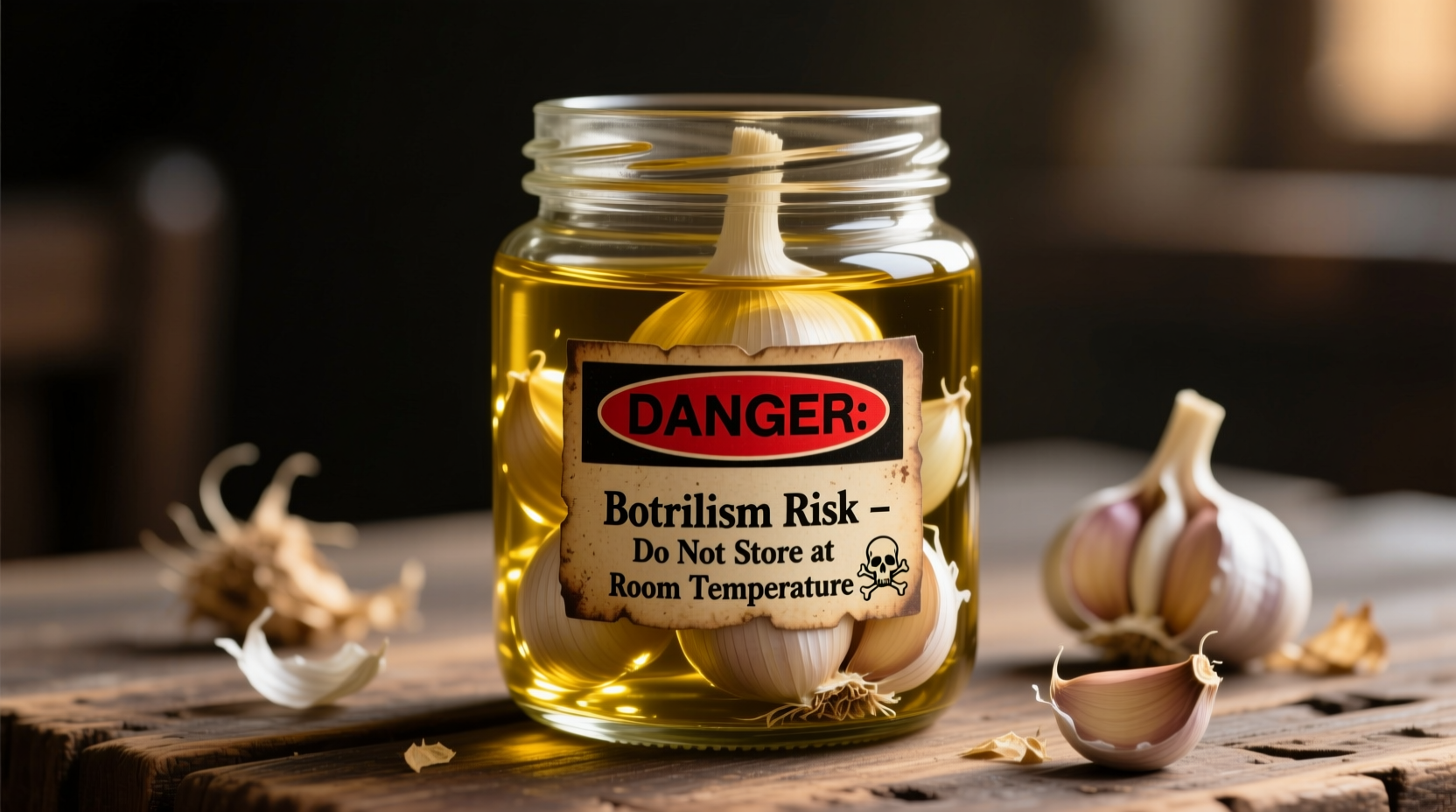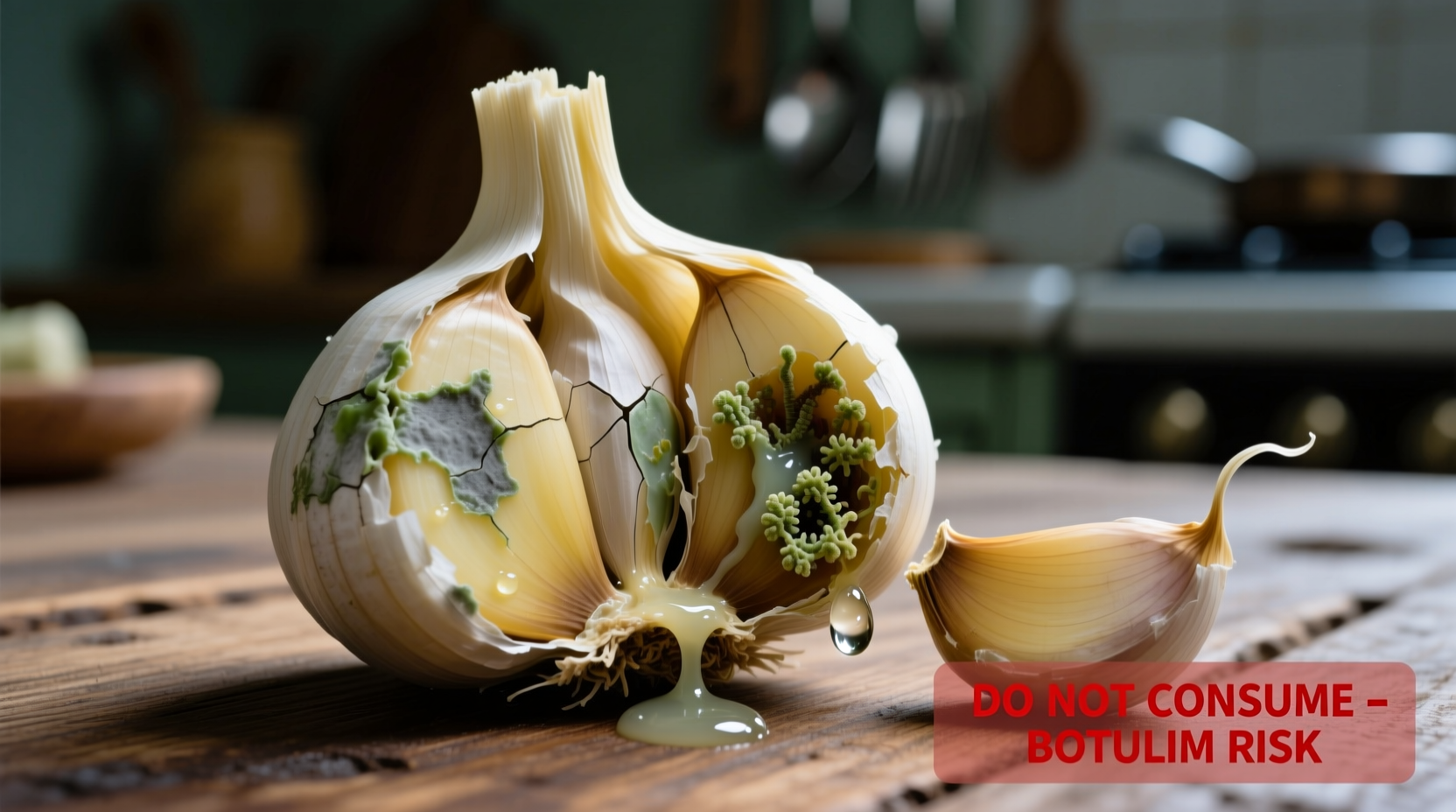Garlic itself does not contain botulism, but improperly stored garlic—especially in oil at room temperature—creates ideal conditions for Clostridium botulinum bacteria to grow and produce deadly neurotoxins. Refrigerate garlic-in-oil mixtures immediately and consume within 7 days, or use acidified recipes with pH below 4.6 for safe preservation.
Every year, homemade garlic-infused oils cause preventable cases of botulism poisoning. Understanding the science behind this risk could save your life or someone else's. This guide delivers actionable food safety protocols based on CDC and FDA research, so you can enjoy garlic's flavor without risking paralysis or death.
The Hidden Danger in Your Pantry
Garlic seems harmless—until it's not. The real threat isn't the garlic itself, but the Clostridium botulinum spores naturally present in soil that cling to garlic bulbs. These spores become dangerous when given three specific conditions:
- Low-acid environment (garlic's pH is 5.3-5.8)
- Air-free conditions (like submersion in oil)
- Temperatures between 40°F-120°F (4°C-49°C)
When these factors combine—as they do in garlic-in-oil preparations at room temperature—the spores activate, multiply, and produce botulinum toxin. This neurotoxin causes botulism, a potentially fatal illness that attacks your nervous system.

Why Garlic in Oil Is Particularly Risky
Commercial garlic-in-oil products are safe because manufacturers use one or more protective measures:
| Commercial Safety Method | How It Works | pH Level Achieved |
|---|---|---|
| Acidification | Adding vinegar or citric acid | Below 4.6 |
| Refrigeration | Continuous cold chain | 40°F or below |
| Preservatives | Sodium benzoate or similar | N/A |
Home cooks rarely replicate these safeguards. When you submerge fresh garlic in oil and leave it on the counter, you've created a perfect breeding ground for botulism. The oil seals out oxygen while providing the moist environment C. botulinum needs to thrive.
Real-World Botulism Incidents Linked to Garlic
According to CDC outbreak data from 2010-2023, garlic-in-oil preparations caused 17% of all foodborne botulism cases in home settings. The most common scenarios:
- Restaurant incidents: Chefs preparing large batches of garlic oil for dipping sauces
- Home preservation: "Raw" garlic-infused oils stored at room temperature
- Gift baskets: Decorative olive oil and garlic combinations
In a documented 2021 outbreak, three people required mechanical ventilation after consuming pesto made with room-temperature-stored garlic oil. The CDC investigation revealed the oil had been sitting on a kitchen counter for 10 days—well beyond the safe window.
Your Step-by-Step Safety Protocol
Follow these evidence-based practices to eliminate botulism risk while enjoying garlic's flavor:
For Immediate Use (Same Day)
Mix garlic with oil only when ready to cook. Never let the mixture sit at room temperature for more than 2 hours. The FDA's Food Code specifies this critical timeframe for potentially hazardous foods.
For Refrigerated Storage
If making garlic-in-oil for later use:
- Peel and chop garlic immediately before mixing
- Add acid: 1 tablespoon vinegar or lemon juice per cup of oil
- Store in airtight container in refrigerator (≤40°F/4°C)
- Consume within 7 days—no exceptions
For Long-Term Preservation
Safe home canning requires:
- pH below 4.6 (use a calibrated pH meter)
- Pressure canning at 11 pounds pressure for 65 minutes
- Never using water bath canning for garlic products
The National Center for Home Food Preservation states that garlic cannot be safely preserved using water bath canning due to insufficient heat penetration.
Recognizing Botulism Symptoms
Botulism doesn't cause vomiting or diarrhea like most foodborne illnesses. Watch for these neurological symptoms appearing 12-36 hours after consumption:
- Double or blurred vision
- Difficulty swallowing or speaking
- Muscle weakness progressing downward
- Paralysis of respiratory muscles
If you experience these symptoms after consuming garlic products, seek emergency medical attention immediately. Botulism antitoxin must be administered before permanent nerve damage occurs.
Debunking Common Misconceptions
Several dangerous myths persist about garlic and botulism:
- "Refrigeration after preparation is enough": If garlic sat in oil at room temperature before refrigeration, toxin may already be present
- "Adding salt prevents botulism": Salt doesn't inhibit C. botulinum growth in oil-based preparations
- "Vinegar smell means it's safe": Botulinum toxin is odorless and tasteless—you cannot detect it through sensory cues
The USDA's Food Safety and Inspection Service confirms that no home test exists to detect botulinum toxin in food. When in doubt, throw it out.
Safe Alternatives for Garlic Flavor
Want garlic flavor without the risk? Try these evidence-based alternatives:
- Dried garlic powder: Commercially processed with moisture content too low for bacterial growth
- Acidified garlic: Pre-made products with vinegar (check pH is ≤4.6)
- Fresh garlic added during cooking: Heat destroys any potential toxin
- Cold-infused oils: Refrigerated mixtures used within 24 hours
For restaurant-style garlic oil, the Culinary Institute of America recommends adding garlic to hot oil just before serving—never storing the mixture.
When Commercial Products Are Your Safest Choice
For certain applications, commercially prepared products provide the only truly safe option:
- Garlic butter for freezing
- Long-term storage of garlic in oil
- Products intended for vulnerable populations (infants, elderly, immunocompromised)
Look for products with clear acidity levels (pH ≤4.6) and refrigeration requirements on the label. The FDA requires commercial producers to validate their processes prevent botulism growth.











 浙公网安备
33010002000092号
浙公网安备
33010002000092号 浙B2-20120091-4
浙B2-20120091-4